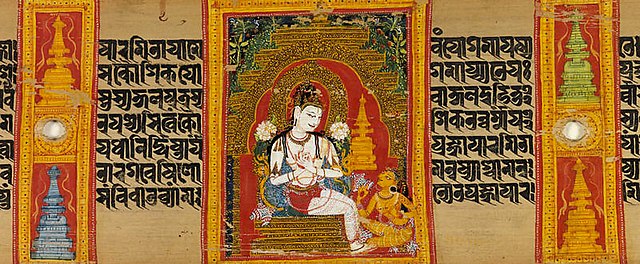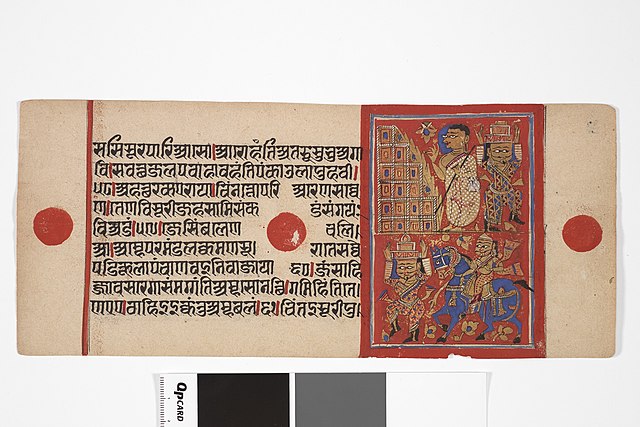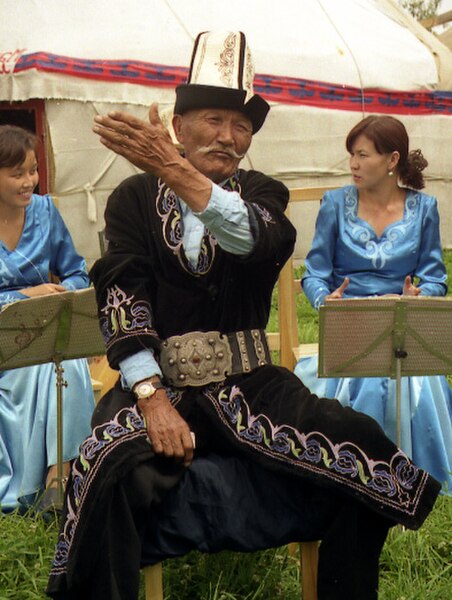Sanskrit literature broadly comprises all literature in the Sanskrit language. This includes texts composed in the earliest attested descendant of the Proto-Indo-Aryan language known as Vedic Sanskrit, texts in Classical Sanskrit as well as some mixed and non-standard forms of Sanskrit. Literature in the older language begins with the composition of the Ṛg·veda between about 1500 and 1000 BCE, followed by other Vedic works right up to the time of the grammarian Pāṇini around 6th or 4th century BCE.
A 17th-century Devimahatmya manuscript written in Newari script
Sanskrit Aṣṭasāhasrikā Prajñāpāramitā Sūtra manuscript written in the Ranjana script. India, early 12th century.
Jain Manuscript, Kalakacarya Katha.
Hymn 10.85 of the Rigveda, which includes the Vivaha-sukta (above). Its recitation continues to be a part of Hindu wedding rituals.
Literature is any collection of written work, but it is also used more narrowly for writings specifically considered to be an art form, especially prose, fiction, drama, poetry, and including both print and digital writing. In recent centuries, the definition has expanded to include oral literature, much of which has been transcribed. Literature is a method of recording, preserving, and transmitting knowledge and entertainment, and can also have a social, psychological, spiritual, or political role.
A traditional Kyrgyz manaschi performing part of the Epic of Manas at a yurt camp in Karakol, Kyrgyzstan
Egyptian hieroglyphs with cartouches for the name "Ramesses II", from the Luxor Temple, New Kingdom
The intricate frontispiece of the Diamond Sutra from Tang dynasty China, the world's earliest dated printed book, AD 868 (British Library)
The Adventures of Pinocchio (1883) is a canonical piece of children's literature and one of the best-selling books ever published.








